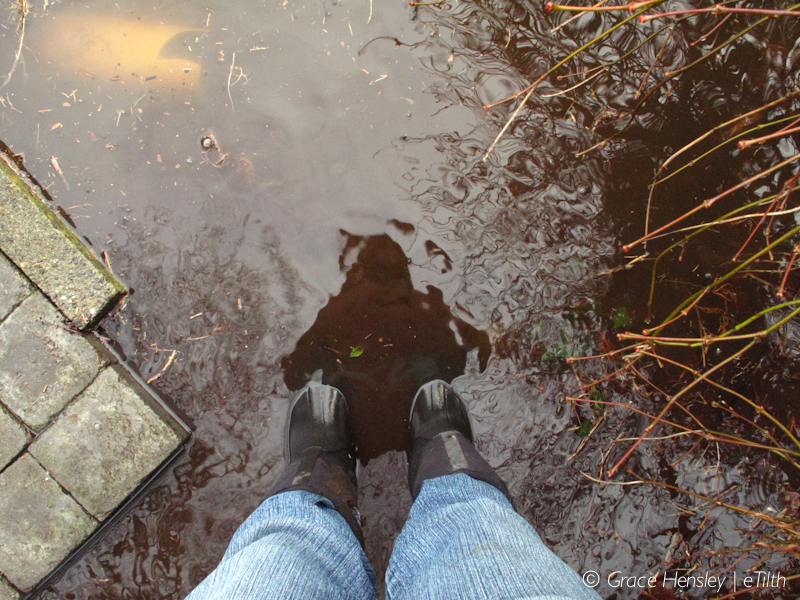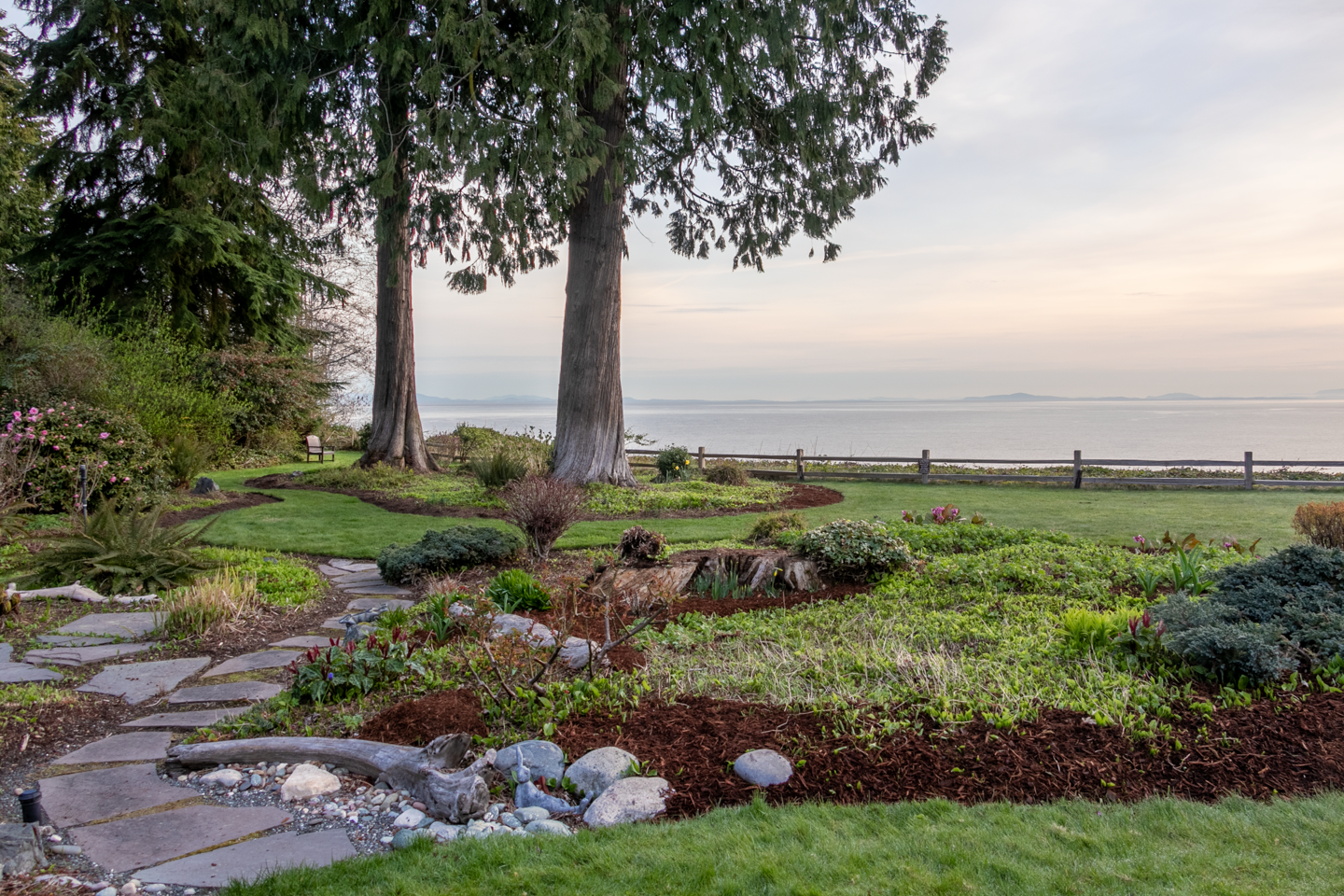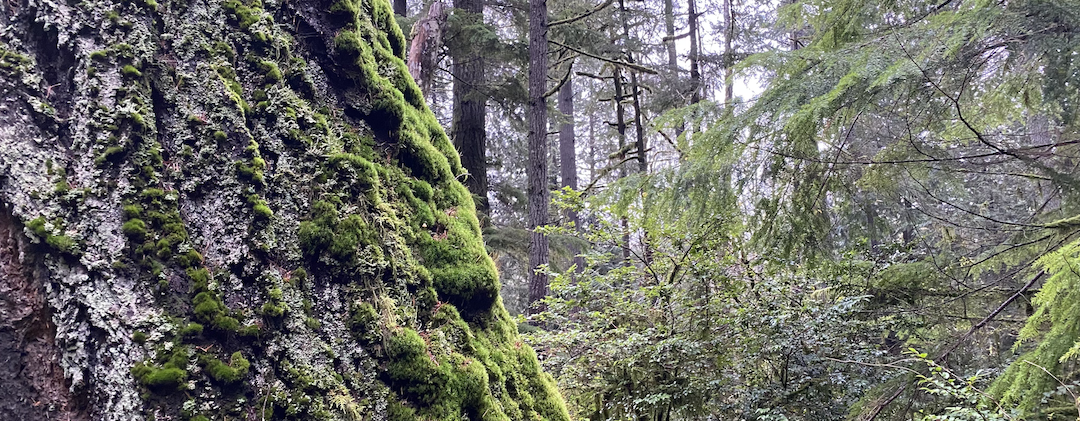The weather in Seattle certainly isn’t frosty this Christmas. In fact, we’ve received over 10 inches this month, the wettest December in nearly a decade

But this doesn’t actually seem very different from last year, nor the year before that. Our backyard routinely floods in high weather events. You can see where we ended building the path to the chicken coop last year. We installed perforated piping encased in fabric and gravel at the base of the vegetable garden, and diverted it under the path, connecting it to a 4′ dry-well that we filled with gravel. But still, the water exceeds the holding capacity of the well.

What is interesting is that this new path is 6″ above the old one, which now is always underwater. Clearly, the water table is higher than at least the 1980s, when we estimate the landscaping was completed by the previous homeowner.

I cringe at the thought of my water-main shutoff, located in the sidewalk, freezing in a storm (blizzard of 2008, anyone?):

What changed?
It’s cavalier of me to claim it is due to climate change, and easy to blame Seattle Public Utilities’ Infiltration Reduction Pilot Program. The flood-grouting pilot project sealed the aging sewer infrastructure which was installed in the 1950s, when there were fewer homes, more trees, and less pavement. Now that the storm-water is prevented from entering the sewer system, it flows down streets and sidewalks, into homes, and certainly doesn’t drain as quickly from our back yard.
Nor does it drain well from anyone else’s:

What to do?
Pointing fingers isn’t going to solve the problem. SPU is working with the community to develop solutions. At present, taking into account the nearby bluff and fragile Piper’s Creek watershed that drains through Carkeek Park, the solution is likely to be a system of neighborhood storm-water cascades instead of retention ponds. Unfortunately, construction is several years hence.

Taking Responsibility
This fall I enrolled in a Permaculture Design course which spent a lot of time studying watersheds, drainage, and techniques for moving water across the landscape to make deserts thrive. John D. Liu’s Green Gold documentary was totally inspiring, but solves the opposite problem! [5 Min Teaser.] Water conservation, at least in the winter, is not a major concern.
But let’s not delude ourselves. In the Pacific Northwest, we live in what is called a modified Mediterranean Climate. This means that we suffer from enjoy a Summer Dry / Winter Wet weather pattern similar to central Chile, South Africa, and Tasmania. That’s why plants from those places tend to do so well in our gardens.
So, the trick is to capture and store our winter rainfall to use in the late summer. The first thing to do is to determine how much water actually falls on our house. The math here is pretty simple, just measure the perimeter and ignore the slope of the roof. I was curious however, how much water was directed into each downspout, so I broke the roof into parts and did a lot of estimating.
With approximately 1900 square feet of roof, it turns out that we can collect 40,000 gallons of water every year!
 Caution: Math! 1900 square feet of roof * 1 foot / 12 inches * 7.48 gallons water per 1 cubic foot * 37.5 inches rain in a Seattle year * 0.9 coefficient of water loss on an asphalt roof = 40,000 gallons
Caution: Math! 1900 square feet of roof * 1 foot / 12 inches * 7.48 gallons water per 1 cubic foot * 37.5 inches rain in a Seattle year * 0.9 coefficient of water loss on an asphalt roof = 40,000 gallons
Four of the downspouts, A, B, C and G are encased in concrete, and dive under the driveway or patios. We will have to think carefully about disconnecting these downspouts, since the overflow can’t just drain onto the ground at these sites. We plan on installing cisterns to collect water from D, E, and F, but we want to build the overflow section before investing upstream. Small changes, baby steps. Meanwhile, you can see the runoff from the driveway, and downspouts E and F drain into the lawn where the water sits. And sits. The lush green grass thrives in a single stripe down the middle.

So, this winter, we are working on clearing out the overgrown blackberries to do some site preparation for our future rain-garden. We’ll do a percolation test to determine if we’ll need to add more woody organic matter to soak up the water, talk to the neighbors “downstream” of us to determine where our overflow can go, and remove more blackberry roots. There isn’t much we can do while the soil is saturated without destroying the soil structure, so we’re pouring over planting plans and calculating how big the rain garden will need to be. My favorite part? Coming up with plant lists. It’s never hard to shop for plants.
Rain Garden Resources:
Oregon Rain Garden Guide (free low-resolution PDF)
Rain Garden Handbook for Western Washington (free PDF)
Save












One Response